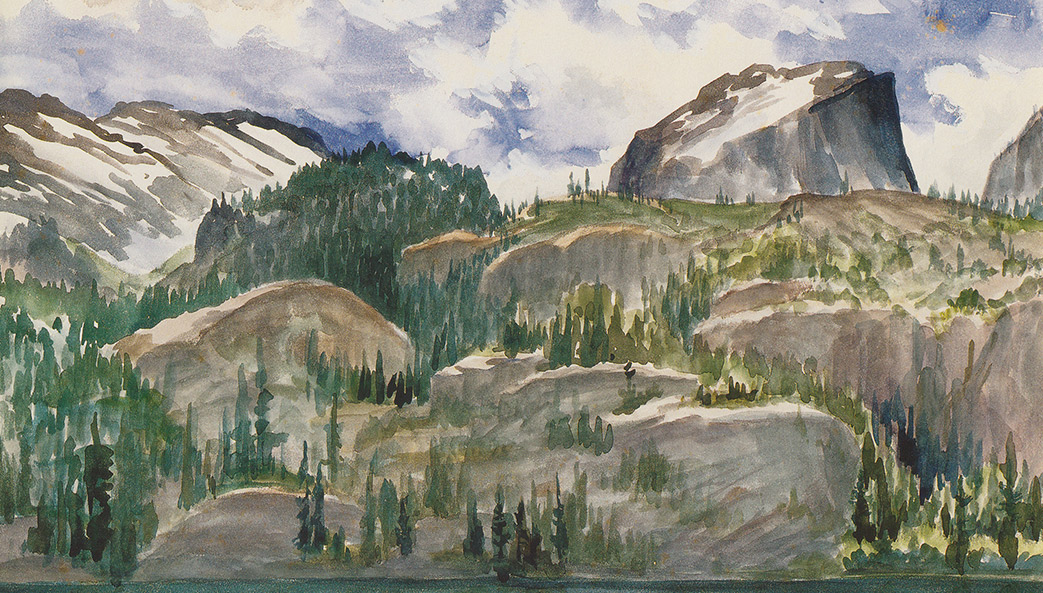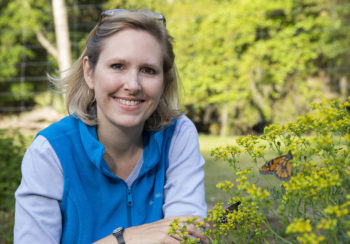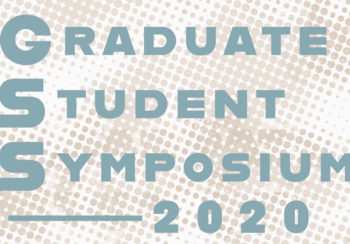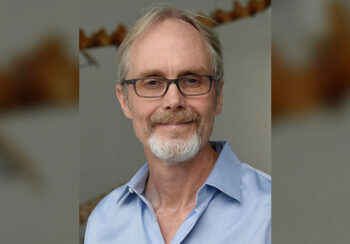Everywhere she traveled, Martha Odum carried a sketch pad, a small metal box of watercolors and a vial of water in her bag. She was always ready to capture a scene, sometimes painting from the driver’s seat of a rental car while using the steering wheel as an easel.
She traveled frequently with her husband, Eugene P. Odum, a professor for whom the UGA School of Ecology is named. As Eugene conducted research and refined his model of ecosystem ecology, Martha documented the natural landscapes she observed.
Art and ecology were a partnership in the Odum family for more than 50 years, Eugene wrote in his introduction to the Georgia Museum of Art’s 1997 exhibition of his wife’s watercolors. He described himself as “a landscape ecologist who studies the ‘essence of function’ of landscapes as living, pulsing ecosystems.”
Martha, he wrote, was “a landscape painter who was able to capture the ‘essence of place’ in her watercolors.”
Last year, Martha’s paintings were exhibited again at the Georgia Museum of Art. “Martha Odum: Art Intersects Ecology” celebrated her work while also commemorating the 50th anniversary of UGA’s ecology program, established by her husband.
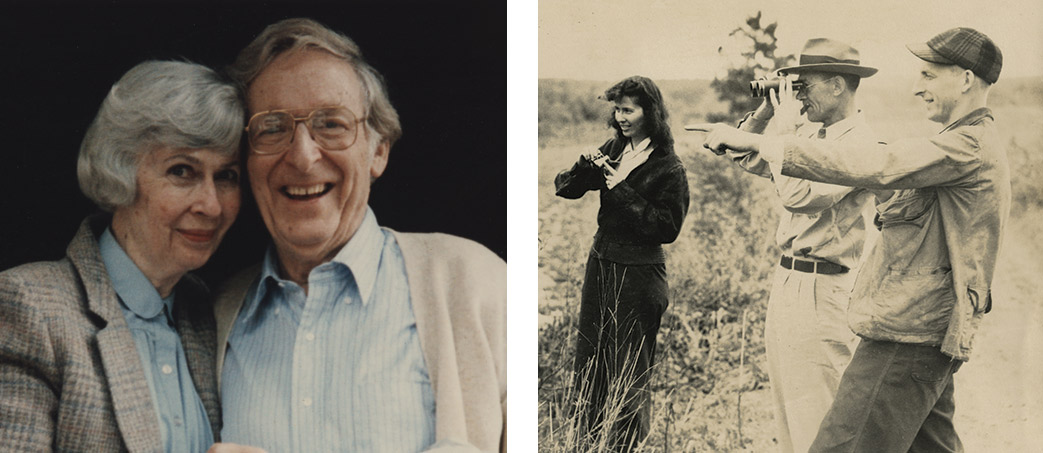
The Odums arrived in Athens in 1940 at the start of their careers. Martha grew up in Illinois and learned to draw and paint at a young age, encouraged particularly by her mother, an amateur watercolorist. During her family’s summer camping trips in the western states, she came to love wilderness landscapes.
Eugene grew up in Georgia and North Carolina. Science called to him early; he explored the streams and creeks near his home and started a magazine—The Briarbridge Bird News—in high school. He earned two degrees at the University of North Carolina and a doctorate at the University of Illinois at Urbana-Champaign (UI), then married Martha Ann Huff, his sister’s former roommate at UI. The couple moved to Athens, where Eugene joined the UGA faculty.
In 1946, his colleagues laughed when the young professor proposed that all new biology majors be required to take his ecology class. Seven years later he published Fundamentals of Ecology, the discipline’s only textbook for more than a decade, with his younger brother and fellow ecologist Howard T. Odum. It was the first to suggest that scientists take a holistic view of nature.
While Eugene built his academic career, Martha took advantage of his work-related travel. When he spent summers teaching at the Marine Biological Laboratory at Woods Hole, Massachusetts, in the late 1950s, she completed a large series of paintings of Cape Cod and New England. In 1962 they traveled as guests of the Japanese Ecological Society and the Japanese Society for the Advancement of Science, resulting in paintings of the Japanese coast and Hawaii.
Martha’s watercolors focused on many of the same ecosystems her husband studied—coastlines, the water’s edge, swamps and streams. She often captured these scenes in one sitting.
“I’ve always enjoyed painting on the spot—feeling the wind and sun, becoming a part of the environment—trying to find its essence,” she wrote in the family’s 1968 Christmas letter.
In 1967, Eugene Odum became director of UGA’s new Institute of Ecology, and the accolades began to accumulate. He was UGA’s first faculty member elected to membership in the National Academy of Sciences, and he received the Tyler Prize for Environmental Achievement. Along with his brother Howard, he was awarded Sweden’s Crafoord Prize, widely considered the equivalent of the Nobel Prize for bioscientists.
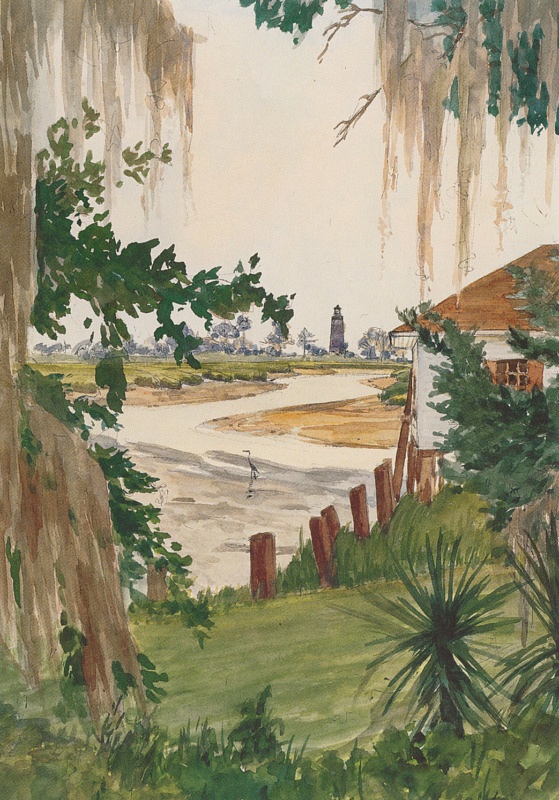
When Eugene’s students graduated, Martha gave each a painting. She had 10 one-woman shows between 1941 and 1990, when she exhibited her watercolors for the last time in the gallery at the Institute of Ecology. In later years, Eugene often planned his trips based on their proximity to an environment that his wife wanted to paint.
Martha died in 1995 at the age of 78, leaving behind more than 300 paintings. Eugene kept half and distributed the rest to relatives, friends and institutions. In addition to arranging the 1997 exhibition of her work, he made a gift to the Georgia Museum of Art, a gesture that led to the creation of the Martha and Eugene Odum Gallery.
In 2002, Eugene died at the age of 88. Five years later, the Institute of Ecology was renamed the Eugene P. Odum School of Ecology, the world’s first school devoted solely to the study of ecology. Today the school has more than 150 undergraduate students. Fundamentals of Ecology, now in its fifth edition, has been translated into more than a dozen languages.
Eugene Odum—widely credited with making “ecosystem” a household word—has often been called the father of modern ecology. Perhaps Martha Odum was its mother, dotingly painting gorgeous portraits of their child. Their partnership demonstrated how art and ecology bring complementary approaches to understanding and communicating about the world. And their legacy continues to echo beyond the borders of the university community, enriching the world.



